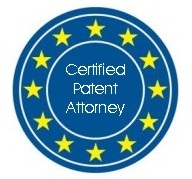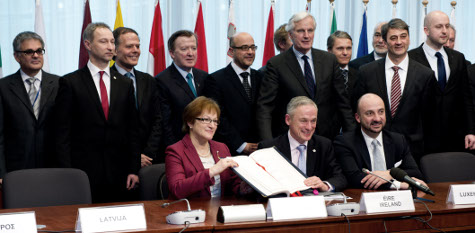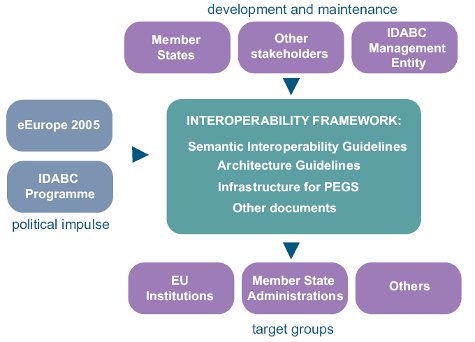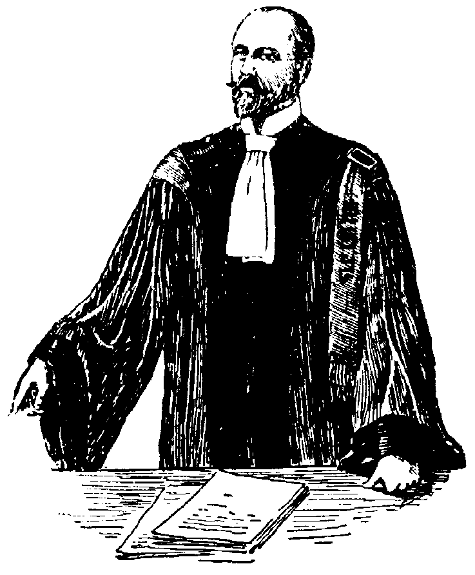 Inspired by this discussion of our recent posting on the latest draft UPC rules of procedure it appears to be high time to have a closer look into Article 48 UPC and related Rule 286 RoP in order to possibly figure out the legislator’s idea of representation rights.
Inspired by this discussion of our recent posting on the latest draft UPC rules of procedure it appears to be high time to have a closer look into Article 48 UPC and related Rule 286 RoP in order to possibly figure out the legislator’s idea of representation rights.
As European and German patent attorneys we still remember the recommendation of the 2006 Venice Patent Judges Symposium according to which only “attorneys-at-law who are fully entitled to represent parties in ordinary civil proceedings in the courts of first instance of the convention states” should be authorised to represent cases before the UPC (see Venice II resolution, page 11, item 5). Later, at the peak of the lobbying battle for representation rights (see e.g. here and here) also the European Parliament’s JURI Committee and its influential rapporteur Klaus-Peter Lehne, an attorney-at-law and partner of international law firm Taylor Wessing, urged it is of “utmost importance” that
the parties should be represented only by lawyers authorised to practise before a court of a Contracting Member State; the representatives of the parties might be assisted by patent attorneys who should be allowed to speak at hearings before the Court [2011/2176 (INI)]
Different voices came from industry organisations, patent practitioners and academia, who raised for good reasons (see here, here, here) that European Patent Attorneys should be authorised to represent their clients before the UPC as well.
Before this background, Article 48 UPCA can be understood as an acceptable compromise:
(1) Parties shall be represented by lawyers authorised to practise before a court of a Contracting Member State.
(2) Parties may alternatively be represented by European Patent Attorneys who are entitled to act as professional representatives before the European Patent Office pursuant to Article 134 of the EPC and who have appropriate qualifications such as a European Patent Litigation Certificate.
(3) The requirements for qualifications pursuant to paragraph 2 shall be established by the Administrative Committee. A list of European Patent Attorneys entitled to represent parties before the Court shall be kept by the Registrar.
(4) … (7)
According to this provision, basically three groups of professionals are authorised to independently represent cases before the UPC, namely
- Lawyers,
- European Patent Attorneys having the European Patent Litigation Certificate, and
- European Patent Attorneys having an appropriate qualification.
Today, on February 19, 2013 at 1415h, the signing ceremony of the International Agreement on the establishment of the Unified Patent Court will take has taken place in the Justus Lipsius building of the Council of the European Union located in Brussels.
The event can be followed by video streaming:
http://video.consilium.europa.eu
As far as we know, 22 countries are today going to sign the Agreement (in brackets: year of accession to EU or predecessor organisations):
- Austria (1995),
- Belgium (1952),
- Cyprus (2004),
- Denmark (1973),
- Estonia (2004),
- Finland (1995),
- France (1952),
- Germany (1952),
- Greece (1981),
- Hungary (2004),
- Ireland (1973),
- Italy (1952),
- Latvia (2004),
- Lithuania (2004),
- Luxembourg (1952),
- Malta (2004),
- Netherlands (1952),
- Portugal (1986),
- Romania (2007),
- Slovakia (2004),
- Sweden (1995), and
- United Kingdom (1973)
According to Ian Wishart of Europeanvoice.com,
Bulgaria (2007),(see UPDATE below)the Czech Republic (2004), (see UPDATE below)- Poland (2004) and
Slovenia (2004)(see UPDATE below)
have indicated that they would not be in a position to sign the agreement next week because they still had technical issues to resolve. They are expected to sign at a later date.
Continue reading »
While nowadays most of the initial filings with the European Patent Office (EPO) or with the Office for Harmonisation in the Internal Market (OHIM) are made via electronic means, a lot of other communication between the respective Office and the applicants or their representatives usually still is dealt with by paper-based means. For example, the EPO sends an awful amount of registered letters every day, and the OHIM mainly uses telefax for sending out Official communications and for receiving responses thereto.
In this context it should be noted that the new Unified Patent Court will be the first major European institution in the field of IP which adopts a policy solely allowing electronic communication, effectively banning all paper-based backdoors. Article 44 of the Agreement on a Unified Patent Court stipulates:
ARTICLE 44
Electronic procedures
The Court shall make best use of electronic procedures, such as the electronic filing of submissions of the parties and stating of evidence in electronic form, as well as video conferencing, in accordance with the Rules of Procedure.
In the 14th Preliminary set of provisions for the Rules of procedure of the Unified Patent Court this matter is picked up by Rule 4, reading as follows:
Rule 4 – Lodging of documents
Written pleadings and other documents shall be lodged at the Registry in electronic form. Parties shall make use of the offcial forms available on-line.
“Written pleadings and other documents shall be lodged at the Registry in electronic form” – no exceptions allowed. At first we note that the internal competence for dealing with filings appears to lie with the Registry of the Court. As a second point, there will be “offcial forms” for each and every potential filing which must be usted and, after being filled in, filed electronically.
Moreover, throughout the full text of the Draft Rules of Procedure there are 25 mentions of “electronic address” of the Court and/or parties involved.
Neither those above-mentioned “official forms” nor the “electronic addresses” are explained in any technical detail within the Draft of the Rules of Procedure.
Closely related to these on-line issues are telephone and video conferences as indicated in Rule 105. There is no Rule defining applicable technologies for such purposes.
Continue reading »
A few days ago, the 14th Draft of the preliminary set of provisions for the Rules of procedure of the Unified Patent Court dated January 31st, 2013, has appeared on the Internet. This means that now all main components of the new EU Unitary Patent & Unified Patent Court system are either final or at least available in a quite recent draft version. The text comprises 382 Rules and covers a wide range of procedural law to be applied in cases before the new court, including:
- Application and interpretation of the Rules of Procedure,
- Procedures before the Court of First Instance,
- Evidence,
- Provisional Measures,
- Procedures before the Court of Appeal,
- General provisions,
- Fees and legal aid.
The k/s/n/h::law blog
Some of the patent attorneys of the KSNH law firm have joined their efforts to research what is going on in the various branches of IP law and practice in order to keep themselves, their clients as well as interested circles of the public up to date. This blog is intended to present results of such efforts to a wider public.
Blog Archives
- November 2013 (2)
- October 2013 (1)
- September 2013 (1)
- August 2013 (2)
- July 2013 (3)
- June 2013 (5)
- March 2013 (5)
- February 2013 (4)
- January 2013 (5)
- December 2012 (5)
- November 2012 (5)
- July 2012 (5)
- June 2012 (8)
- May 2012 (5)
- April 2012 (3)
- March 2012 (4)
- February 2012 (5)
- January 2012 (6)
- December 2011 (12)
- November 2011 (9)
- October 2011 (9)
- September 2011 (4)
- August 2011 (7)
- July 2011 (4)
- June 2011 (1)
Blog Categories
- business methods (6)
- EPC (7)
- EPO (12)
- EU law (92)
- ACTA (8)
- CJEU (4)
- Comitology (1)
- competition law (2)
- Enforcement (6)
- EU Unified Patent Court (62)
- FTA India (1)
- TFEU (2)
- Trade Marks (5)
- European Patent Law (37)
- German Patent ACt (PatG) (1)
- German patent law (5)
- Germany (6)
- Pirate Party (3)
- International Patent Law (4)
- PCT (2)
- IP politics (10)
- licenses (2)
- Litigation (5)
- Patentability (7)
- Patents (12)
- Piratenpartei (2)
- Software inventions (10)
- Uncategorized (9)
- Unitary Patent (24)
- US Patent Law (4)
Comments
- kelle on Germany: Copyright Protection More Easily Available For Works Of “Applied Arts”
- Time Limits & Deadlines in Draft UPCA RoP: Counting The Days - KSNH Law - Intangible.Me on Wiki Edition of Agreement on Unified Patent Court Agreement (UPCA)
- Time Limits & Deadlines in Draft UPCA RoP: Counting The Days | ksnh::law on Wiki Edition of Agreement on Unified Patent Court Agreement (UPCA)
- Wiki Edition of Agreement on Unified Patent Cou... on Wiki Edition of Agreement on Unified Patent Court Agreement (UPCA)
- European Commission Takes Next Step Towards Legalising Software Patents in Europe | Techrights on EU Commission publishes Proposal of amendend Brussels I Regulation for ensuring Enforcement of UPC Judgements
Blogroll
- 12:01 Tuesday
- America-Israel Patent Law
- Anticipate This!
- AwakenIP
- BlawgIT
- BLOG@IPJUR.COM
- BP/G Radio Intellectual Property Podcast
- Broken Symmetry
- Class 46
- Director's Forum: David Kappos' Public Blog
- Gray on Claims
- I/P UPDATES
- IAM Magazine Blog
- Intellectual Property Intelligence Blog
- IP Asset Maximizer Blog
- IP CloseUp
- IP Dragon
- IP Watch
- IP Watchdog
- IPBIZ
- ipeg
- IPKat
- ITC 337 Law Blog
- Just a Patent Examiner
- K's Law
- MISSION INTANGIBLE
- Patent Baristas
- Patent Circle
- Patent Docs
- Patently Rubbish
- PatentlyO
- Patents Post-Grant
- Reexamination Alert
- SPICY IP
- Tangible IP
- The 271 Patent Blog
- The Intangible Economy
- THE INVENT BLOG®
- Think IP Strategy
- Tufty the Cat
- Visae Patentes
The KSNH blogging landscape


This blog and the German-language sister blog k/s/n/h::jur link to the two popular and privately run blogs IPJur und VisaePatentes and continue their work and mission with a widened scope and under the aegis of our IP law firm.
ksnhlaw on Twitter
- No public Twitter messages.
 KSNH::JUR Feed (german)
KSNH::JUR Feed (german)- Ist Verschlüsselung passé? September 6, 2013Auf verschiedenen Feldern beruflicher Praxis ist dafür zu sorgen, dass Kommunikation vertraulich bleibt. Die trifft beispielsweise für Ärzte zu, aber auch für Anwälte, darunter auch Patentanwälte. Einer der zahlreichen Aspekte, die in diesem Zusammenhang eine Rolle spielen, ist die Technik, um die Vertraulichkeit beruflicher Kommunikation sicherzustellen. Wa […]
- EU-Einheitspatent: Demonstrativer Optimismus und Zahlenmystik allerorten – Naivität oder politische Beeinflussung? June 26, 2013Nach mehreren vergeblichen Anläufen zur Schaffung eines EU-weiten Patentsystems wurde 1973 als Kompromiss das Europäische Patentübereinkommen unterzeichnet, welches unabhängig von der seinerzeit noch EWG genannten Europäischen Union System zur zentralisierten Patenterteilung mit nachgeordnetem Einspruchsverfahren durch das Europäische Patentamt schuf. Wie wi […]
- Moderne Zeiten oder: DPMA und Patentgericht streiten über die elektronische Akte April 25, 2013Bekanntlich hat das Deutsche Patent- und Markenamt (DPMA) im Jahre 2013 mit der rein technischen Fertigstellung der Einrichtungen zur elektronischen Akteneinsicht einen wichtigen Meilenstein seines Überganges von der Papierakte zur “elektronischen Akte” erreicht. Im DPMA werden aber bereits seit dem 01. Juni 2011 Patente, Gebrauchsmuster, Topografien und erg […]
- Gutachten zu Forschung, Innovation und technologischer Leistungsfähigkeit Deutschlands 2013 March 11, 2013Unter dem Datum vom 28. Februar 2013 ist die Bundestags-Drucksache 17/12611 veröffentlicht worden Sie trägt den Titel Unterrichtung durch die Bundesregierung - Gutachten zu Forschung, Innovation und technologischer Leistungsfähigkeit Deutschlands 2013. Die Bundesregierung legt dem Deutschen Bundestag seit dem Jahr 2008 […]
- 3D-Printing: Zum Filesharing von 3D-Modelldaten February 25, 2013In meiner kleinen zuvor angekündigten Reihe über rechtliche Aspekte des 3D Printing komme ich heute auf die Frage zu sprechen, ob die Hersteller von Gerätschaften es hinnehmen müssen, wenn Ersatztreile davon – vom Brillengestell über Smartphone-Gehäuseteile bis hin zu Rastenmähermotor-Abdeckungen – gescannt und die daraus […]
- Ist Verschlüsselung passé? September 6, 2013







